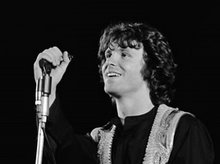Identify the theme that doesn’t belong in a series of books for Chinese children:
- Cartoon Characters
- Cute Animals
- Mysterious Dinosaurs
- Pretty Flowers
- Means of Transportation
- Military Weaponry
If you guessed #4, “Pretty Flowers,” you are right! The other five are themes of real coloring/drawing/character practice books in a series by Beijing Children and Juvenile Publishing House.
While we’re on the topic of Military Weaponry for Kids, let’s explore that book, shall we? Here’s what the book’s cover looks like:
The big name on the front is 画童学画, which could be cleverly “translated” as “Draw Child Study Draw.” Here’s what a few of the pages look like:
Each page basically does three things: (1) teaches the kid how to draw something across the top, (2) using pinyin, teaches the kid how to say the name of the object in the middle, and (3) gives the kid practice writing the character at the bottom.
Some observations:
The characters offered for writing practice in the book are at a kindergarten level, but the weaponry vocabulary is at a much, much higher level. (I don’t even know the names of some of those guns in English. Clearly I come from a totally un-war-like culture. Ahem.)
The part at the top that “teaches drawing” isn’t helpful. I used plenty of those “learn how to draw” books growing up, and this one just sucks.
Hey, this book is pretty useful for someone like me to learn weaponry vocab. Among the Chinese vocabulary taught in the book are: machine gun, heavy machine gun, handgun, rifle, semi-automatic rifle, uzi, revolver, hand grenade, flame thrower, rocket launcher, smoke grenades, tank, aircraft carrier, bomber plane, fighter jet, guided missile, stealth bomber… and more.
One of the guns is called a 来福枪 (lit. “come luck gun”). Hehe. Wenlin says it means “rifle” (a kind of transliteration) but it looks more like a shotgun to me.
Oh, right, I almost forgot: why do little Chinese kids need to be learning this stuff??
This kind of children’s book is not very uncommon; you can find similar books in almost any bookstore in China. (See the book here.)

